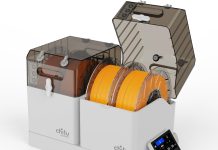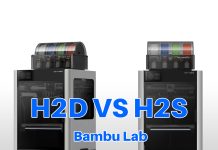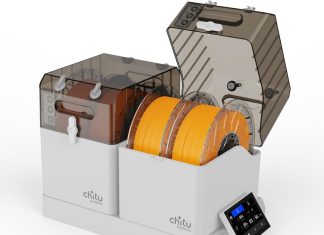In the dynamic world of 3D printing, staying ahead requires not only the right hardware but also an in-depth understanding of materials and settings. For enthusiasts and professionals alike, the Anycubic M7 Pro is a standout resin printer that delivers unparalleled precision and detail. To harness the full potential of this printer, a well-optimized resin profile is essential. This guide focuses on helping you set up the perfect resin profiles, enabling you to maximize your 3D printing results.
Understanding the Anycubic M7 Pro
The Anycubic M7 Pro is designed to cater to both beginners and advanced users. Its features include a high-resolution LCD screen, fast printing speeds, and a robust build volume that makes it a remarkable choice for intricate designs. However, the real magic lies in its compatibility with a wide array of resins. Optimizing your resin profile allows you to achieve superior results in terms of print quality, accuracy, and finish.
The Importance of Resin Profiles
A resin profile serves as a set of tailored parameters that aid the printer in processing a specific type of resin. These settings include exposure time, layer height, lift speed, and retract speed—each of which dramatically influences the final outcome of your prints. Properly tuning these parameters can mean the difference between a successful print and a failed one. Here are some fundamental aspects to consider when creating your resin profile for the Anycubic M7 Pro:
1. Exposure Time
The exposure time, or the amount of time each layer is exposed to UV light, is crucial. For the Anycubic M7 Pro, it is recommended to start with an exposure time of around 6-8 seconds for standard resins. However, you may need to adjust this based on the specific resin you’re using and your print’s complexity. Transparent or very liquid resins may require a longer exposure time, while faster-setting resins may need less.
2. Layer Height
The layer height influences both the resolution and speed of your prints. While the Anycubic M7 Pro can accommodate various layer heights, a good starting point is between 0.05mm and 0.1mm. Thinner layers yield higher detail but can increase print time significantly. For models where detail is less critical, thicker layers might be more efficient.
3. Lifting and Retract Speeds
The lifting speed refers to how fast the print head moves away from the resin vat after each layer is cured. A good balance between lift speed and retract speed ensures that prints are pulled off smoothly without causing turbulence in the resin vat. Setting both speeds between 50-80mm/min is a safe bet. It may be necessary to fine-tune these figures based on your results.
4. Temperature Considerations
3D printing with resin isn’t just about the printer parameters; ambient temperature affects the viscosity of the resin and consequently its performance. Ideally, resins should be used in environments maintained at 20-25°C (68-77°F). If printing in cooler conditions, your exposure times may need adjustment, or you may opt for heater units designed for resin printers.
5. Anti-Aliasing and Anti-UV Strategies
In addition to the basic parameters, consider enabling anti-aliasing. This feature smoothens the surfaces of your prints, reducing visible stepping and improving the overall aesthetics. Additionally, consider using UV filters when printing with certain resins, which can help minimize unwanted curing and improve detail.
Suggested Resin Profiles
Once you understand how each parameter affects your print, it’s helpful to have a few predefined resin profiles for common printing scenarios. Below are two suggested profiles tailored for the Anycubic M7 Pro:
Standard Resin Profile
- Exposure Time: 7 seconds
- Layer Height: 0.1mm
- Lifting Speed: 60mm/min
- Retract Speed: 60mm/min
High-Detail Resin Profile
- Exposure Time: 8 seconds
- Layer Height: 0.05mm
- Lifting Speed: 50mm/min
- Retract Speed: 50mm/min
These profiles serve as starting points and may require adjustments based on your specific resin type and environmental conditions.
Final Thoughts
The Anycubic M7 Pro is a powerful tool that, when paired with the correct resin profile, can produce stunning results. The key to successful printing lies in experimentation and continuous learning. Spend time tweaking your settings, testing different resins, and embracing the trial-and-error process. By fine-tuning your resin profiles, you’ll elevate your 3D printing game, unlocking limitless possibilities in creating intricate designs and prototypes.
Happy printing!






